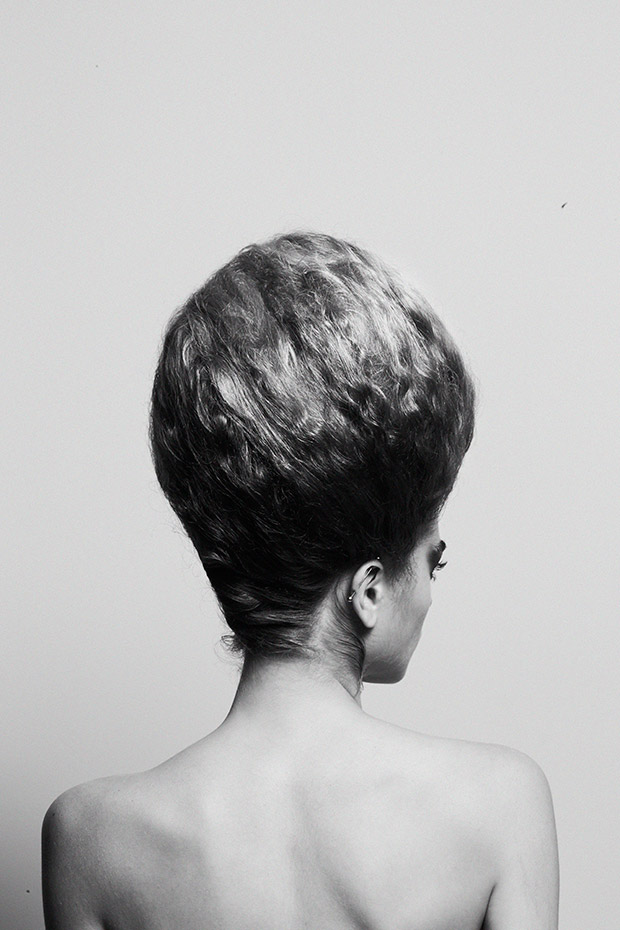
Picture yourself going out the door with your wig properly fixed and feeling natural and firm the entire day.
That’s the beauty of the lace glue, as it leaves no room for worry about whether the wig will stay in place during the day.
Whether you go to the office, jogging, or party all night long, lace glue is the key to making that look stay put without worrying about your wig slipping or falling off.
The Importance of Lace Glue for a Flawless Wig Look
For anyone aiming to have a clean and flawless look for a wig, lace glue is an essential that should always be noticed. Lace glue seems to be a minor aspect of wig-wearing that wouldn’t require much of your attention. You should learn about it, especially if you are a wig enthusiast or just starting with it. Having a bit of extra hold lace glue can help you on your vacation holidays.
Well, what is lace glue? And why is everyone gaga over it, particularly those involved in wig-wearing? Sit back, pour your favorite drink, and let us guide you through the mysteries of lace glue.

The Unique Properties of Lace Glue
Lace glue is a form of adhesive used to fix lace wigs, lace frontals, and lace closures perfectly on the head. Unlike most adhesives, lace glue was developed to be durable enough to hold laces in place without compromising the general hair or skin. This makes it the best-recommended option for anyone who wants to pull off a wig look without any constraints.
The primary importance of lace glue is what it is made of. It can be water- or solvent-based, and the bond produced is strong enough to withstand life’s regular wear and tear, from a morning run to a night of dancing.
Choosing the Right Adhesive: Water-Based vs. Solvent-Based
Water-based adhesives are very suitable for skin gentleness, although they should be stiff. Solvent-based glues are perfect for rigid adhesion – they are handy for wearing during long-term events or activities.
Step-by-Step Guide to Applying Lace Glue
Lace glue is used primarily to securely attach a wig’s lace to the skin. Getting this smooth look takes several steps, and any shortcutting is highly inadvisable. Let’s explore how lace glue works and how to apply it properly.
- Preparation: The first process that can prevent wigs from slipping and provide a long-lasting hold is planning. Skin prep should be used to make your skin clean in a way that removes oils, sweat, and makeup that can be present on the skin. To ensure you do not remove the bonding glue or any of the bonding residues, clean your hairline using an alcohol wipe.
- Application: After getting your skin ready, the adhesive application step comes. If one is using a recommended Acrylic Lace Glue, this should be best applied as a thin line along the hairline. Do not use too much glue, as it can be impossible to create fine lines and blend with the skin’s tone since the glue will also be thick, and removing it is also not easy.
- Drying Time: The final remaining step is to be patient after applying the adhesive. You can also apply white lace glue to help the lace base dry. Let the glue become tacky, which typically occurs in a few minutes but depends on the type of glue. Skipping this step could result in poor adhesion and may make the product need reapplication sooner than anticipated.
- Positioning: Finally comes the most important segment of wearing a wig – putting on the wig. Ensure the wig is properly placed on your hairline, from the forehead to the nape of your head. Using your fingertips, apply pressure on the lace, ensuring you press all the lace portions into the adhesive. The force should be applied firmly but gently because the lace garments are rather delicate, and the force applied can tear them.
- Secure: To ensure that the hairpiece securely sticks to the head, it is recommended that after the glue is applied, a scarf or a wig band be used to hold the lace as the glue dries.
Leave the scarf or band on for at least 10 to 15 minutes. This waiting time allows the glue to set fully to ensure your wig does not move or lift during the day or even at night.
By adhering to these steps and points highlighted above, you can easily apply lace glue and get that perfect secure wig installation every time.

Safe Removal of Lace Glue
Applying lace glue is one step closer to enjoying a perfect wig experience – the other part involves safe and efficient removal. It is crucial to avoid any skin issues and hair strand problems associated with your natural hair and shorten the expected life of your wig.
The Importance of Safe Removal
Failure to follow the right procedures of applying lace glue or applying pressure when removing it can damage the skin, hair or even tear off the lace of the wig. Failure to remove lace glue properly harms the skin and your wig, so it is important to allow some time to do it properly.
Step-by-Step Guide to Removing Lace Glue
- Choose the Right Remover: The first step in the removal process is selecting an appropriate lace glue remover.
- Apply the Remover: Use the lace glue remover or oil-based product to the glued areas. Use a cotton ball or a soft cloth to dab the remover along your hairline where the glue is applied. Make sure the remover saturates the adhesive thoroughly to break it down effectively.
- Let It Sit: Allow the remover to sit on the adhesive for a few minutes. This waiting period is crucial as it allows the remover to dissolve the glue fully. The duration can vary depending on the strength of the adhesive and the remover used. 5 to 10 minutes should be sufficient.
- Gently Lift the Lace: Once the adhesive has softened, gently lift the lace from your skin. Start from one corner and slowly peel it away, using a gentle back-and-forth motion. Avoid pulling or yanking, as this can cause skin irritation and damage the lace. If you encounter resistance, apply more remover and wait a few more minutes before trying again.
- Remove Residue: Some glue residue might be left on your skin and the wig’s lace after removing the wig. Use a cotton ball soaked in the remover to clean any leftover adhesive. Be thorough in this step to ensure all traces of glue are removed.
- Cleanse Your Skin: Once all the glue residue is gone, cleanse your hairline with a mild, gentle cleanser to remove any remaining remover or oil. This step helps to restore your skin’s natural balance and prevents any potential irritation or breakouts.
So, the next time you’re ready to switch up your look, you can do so confidently, knowing you have the tools and knowledge for a seamless and safe transition.

Tips for Using Lace Glue
Perform a Patch Test
Before using any new lace glue, perform a patch test on a small area of your skin. This helps determine if you have allergic reactions or sensitivities to the product. Better safe than sorry!
Apply Evenly and Sparingly
Use a thin, even layer along your hairline when applying liquid lace glue. Avoid over-applying, as too much glue can create a mess and make removal difficult. Press them firmly onto your skin for adhesive tapes to ensure they stick well.
Secure the Wig Properly
Once the glue is tacky, carefully position your wig from the front and work your way back. Press the lace into the adhesive gently but firmly. To ensure the glue sets properly, use a scarf or wig band to hold the lace in place for at least 10 to 15 minutes.
Use a Quality Remover
When removing your wig, use a high-quality lace glue remover or an oil-based product like coconut or baby oil. Apply the remover generously and let it sit for a few minutes to dissolve the adhesive.
Store Glue Properly
Keep your lace glue in a cool, dry place to maintain its effectiveness. Ensure the cap is tightly closed to prevent the adhesive from drying out.
By following these tips, you can ensure a smooth and successful experience with lace glue, keeping your wig secure and your skin healthy. Happy styling!
Images from Volume by Alejandra Vzqz – see full story here.




ugh had a wig, its not an easy thing! but once you master it, it is the most of fun